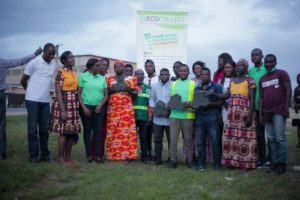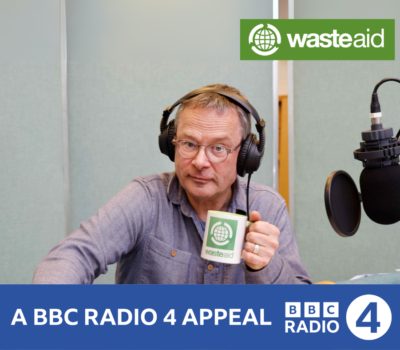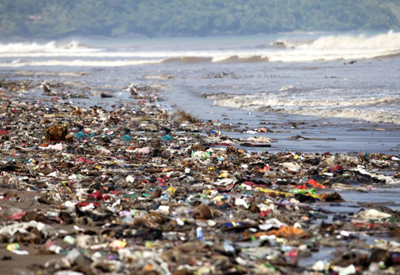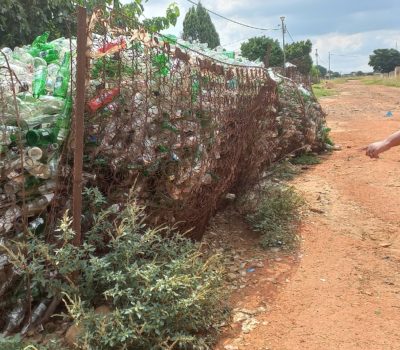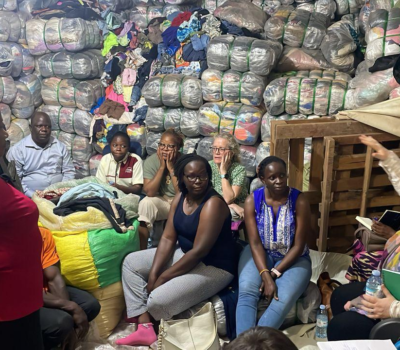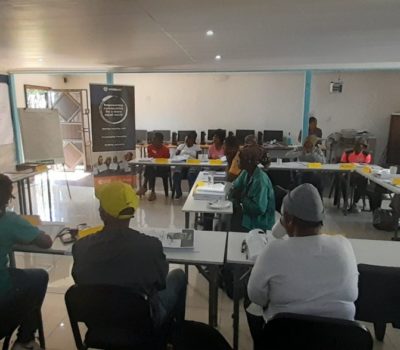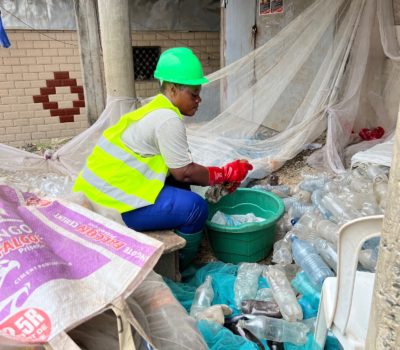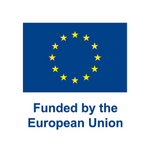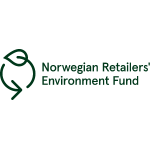Growing WaRM for climate resilience in Africa
News
Author: Admin
Published: 10 February 2021
WasteAid‘s senior technical advisor and head of communications, Zoë Lenkiewicz, says waste and resource management (‘WaRM’) has an important role in building climate resilience in Africa, and with COP26 on the horizon WasteAid is aiming to put it on the agenda.

Waste is a complex challenge with poor data, but you don’t have to look far to see its obvious impacts. In lower-income countries across Africa (and elsewhere), a waste collection service is rare. Recycling industries exist but are often poorly connected and so fail to gain market penetration, and there are many competing priorities on the public purse.
People are generally unaware of the impacts of mismanaged solid waste, and so it remains low on people’s priorities compared to health, food security, clean water and education. It also means that when people burn waste they do so without understanding the risks. In particular, waste collectors dispose of waste without any protection – and are usually among the most vulnerable in society with underlying health risks.
Due to this informal nature of waste management, emissions are impossible to measure accurately. We can make informed guesses on the release of methane, black carbon and other greenhouse gases, but the varying compositions of waste and the various disposal conditions make the true impacts difficult to determine with accuracy (for example, the Global Waste Management Outlook (UNEP/ISWA, 2015) estimates that around 10-15% of global greenhouse gas emissions could be reduced through improved waste management).
Making changes further up the supply chain can bring significant additional climate benefits, through waste avoidance, eco-design, design for disassembly, repair and extended product lifetimes. When avoided emissions from the use of raw materials and waste recovery for other sectors are included, the contribution of waste management to total greenhouse gas mitigation could increase to 15-20% (UNEP/ISWA, 2015).
Africa is not a significant source of climate change emissions. According to the World Resources Institute, Africa’s per capita emissions of CO2 in the year 2000 were 0.8 tonnes compared to the global average of 3.9 tonnes per person.
However, urbanisation and waste generation continue to grow and economic development in countries such as Nigeria, South Africa and Egypt mean projected waste arisings are more akin to European levels.
Whether a country generates a little or a lot, African governments can implement waste and resource management policies to reduce urban pollution and its significant health costs, while creating jobs and reducing climate emissions.
Cleaning up for climate resilience
Africa is already experiencing temperature increases of 0.7% (and rising), and is the continent most vulnerable to the impacts of climate change. Droughts and floods are affecting food production, spreading water-borne diseases and malaria, and causing drastic biodiversity loss.
Many farmers across Africa rely solely on chemical fertilisers that degrade the soil and increase their vulnerability to a changing climate. Recycling of food waste through the production of compost and biochar helps preserve soils, improving water retention and soil microbiology. WasteAid’s recent feasibility study in Malawi concluded that good practice and national standards for compost production would give confidence to the market while protecting soils for future harvests.
Reducing dependence on forests for firewood is essential to global climate stability. The Congo Basin, the second largest tropical rainforest in the world, is being lost at a rate of 40,000 square kilometres a year (around 0.6% of the remaining forest cover on earth).
The threats posed by the continuous consumption of fossil fuels and timber, and the inefficient use and disposal of biomass, can again be reduced through better resource management. Charcoal briquettes made from woody waste such as coconut shell (see the WasteAid Toolkit for information) is one of the few proven, cost-effective, and available technologies that can decrease CO2, NOx and SO2 emissions.
In the city of Kinshasa in the Democratic Republic of the Congo, WasteAid has undertaken a needs assessment among informal waste workers. Here, plastic bottles and organic waste are causing the main challenges, with weak markets and a lack of enforcement making open dumping and burning the norm.
The Congo River snakes towards the Atlantic Ocean, and by the time it reaches the coast is full to the brim with plastic waste that nobody can afford to manage. Monsoon rains cannot flow like they used to, making flash floods and associated increases in malaria and cholera commonplace.
Meanwhile at the Cameroon Estuary, WasteAid’s UK Aid Match programme has now seen the recruitment of 112 apprentices who will be trained and offered long-term employment opportunities in the nascent plastics recycling sector.
Over the next 18 months, the team is expecting to recover more than 16 tonnes of plastic from its alternative fate of being burned or reaching the ocean, and thanks to a corporate partnership this positive impact is set to grow.
Collaborate for the climate
In lower-income countries, the social, economic and climate benefits of sustainable waste and resource management are sizeable, and to make the most of these through Nationally Determined Contributions (NDCs) will require the cooperation of the public, private and community sectors.
To support this type of cross-sector collaboration, WasteAid is running a multi-city circular economy network to identify opportunities for inclusive green growth, culminating in an innovation competition with prizes of up to 10,000 Euros of seed funding for the winners.
The network is encouraging collaboration and partnerships between producers, re-processors and grassroots innovators in Johannesburg, Ho Chi Minh and Guwahati through citywide and online activities (see circulareconomynetwork.co). WasteAid’s team is keen to expand this approach to other countries in the coming years.
An optimised circular economy in Africa will keep things local to reduce transport costs and emissions, and be designed according to the local context. Waste streams in lower-income countries have a higher proportion of wet waste, and a lower per capita generation. Technology is often prohibitively expensive, while unemployment rates among young and growing populations are high. The potential for waste management to bring about positive social, environmental and economic change is huge.
As governments in lower-income countries look to waste management as a pillar of climate resilience, it’s important that organisations like WasteAid are there to give impartial support and to offer solutions that prioritise the most vulnerable people. By working in partnership, we can help deliver waste and resource management systems that improve livelihoods and create a cleaner, cooler world for us all.
While planned programmes have been affected by the events of 2020, the importance of WasteAid’s corporate partnerships has grown. WasteAid is welcoming new partners to help grow its impact, and to help make a circular economy work for people everywhere.
This was first published in Circular.


